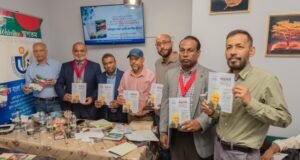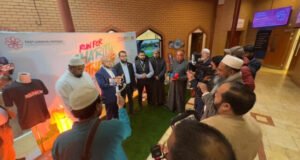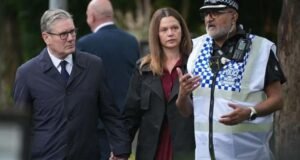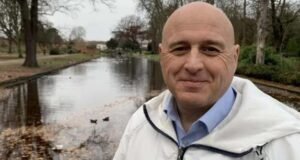
British Muslims break their fast together during Ramadan at the East London Mosque. (East London Mosque)
The majority of Muslims are living in the areas of England and Wales with the worst levels of deprivation, the UK Office for National Statistics revealed on Wednesday.
Muslims now account for 6.5 percent of the population in England and Wales, some 3.9 million in 2021, according to the latest ONS census, reports Arab News.
However, the data showed 61 percent of them live in the lowest 40 percent of areas ranked by deprivation score, The Guardian reported.
Tower Hamlets, considered one of the most deprived areas, had the highest percentage of Muslims in England and Wales in 2011. The census in 2021 shows that they now account for 39.9 percent of the local population.
Meanwhile, only 4 percent of Muslims live in the 20 percent of areas least deprived.
Policymakers have been urged to address the “cycles of poverty” that have affected generations of British Muslims, the numbers of which have increased by 1.2 million in the last decade.
Muslim Council of Britain Secretary-General Zara Mohammed told The Guardian: “We’re now the second or third generation (of Muslims).
“There’s more of us here, and yet we’re still in these cycles of poverty and deprivation.
“I think part of that is down to socioeconomic conditions where people are housed, and the economic opportunities available.
“There’s something to really be said about what our politics and policies are doing to help those who are really suffering.
“There’s all these stereotypes and tropes around Muslims, but the reality is that people are actually in cycles of poverty. And these need to be broken.”
Sufia Alam, head of the Maryam Centre and programmes at East London Mosque in Tower Hamlets, told The Guardian: “I have worked for almost three decades in this borough and it’s one of the poorest in London and indeed in the country.
“Even though it’s a rich borough as well as a poor borough: We’ve got Canary Wharf on our doorstep.
“The (census data) are not surprising because of so many factors that we’ve often talked about: Islamophobia, cultural biases that exist, racism within institutions from education all the way to employment.
“I remember talking about the same thing in the 2011 census. Nothing’s really changed.”
 Weekly Bangla Mirror | Bangla Mirror, Bangladeshi news in UK, bangla mirror news
Weekly Bangla Mirror | Bangla Mirror, Bangladeshi news in UK, bangla mirror news







